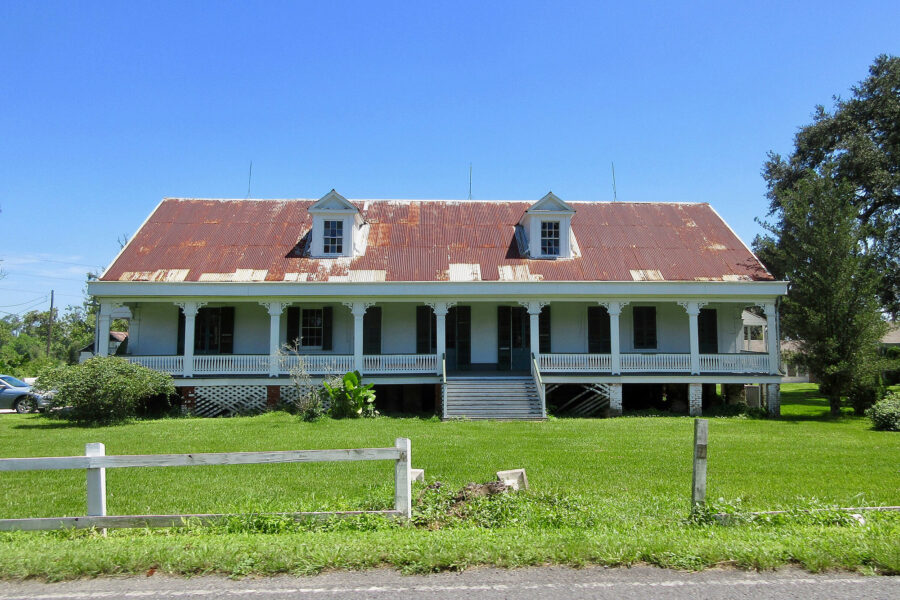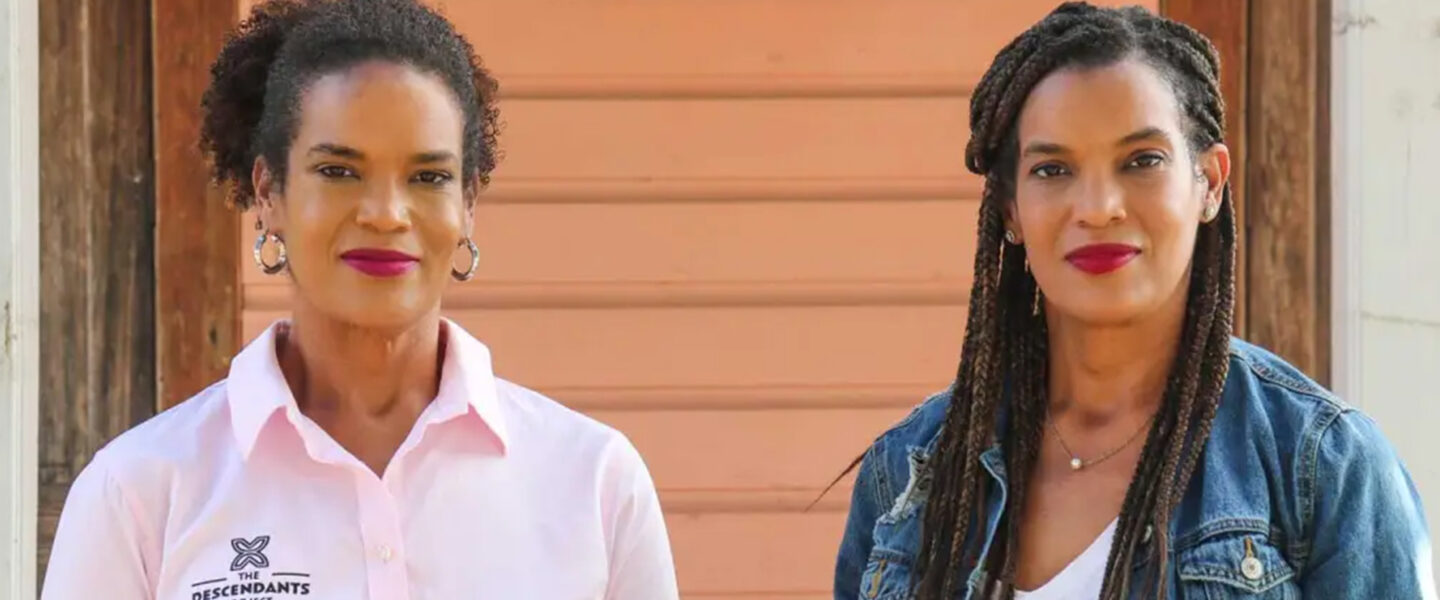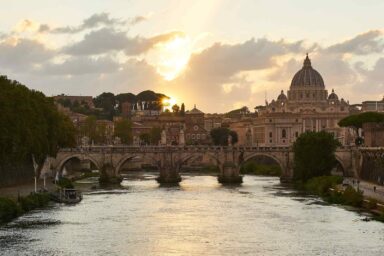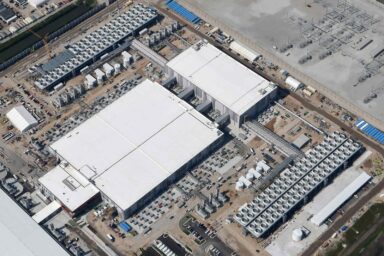At the site of the largest slave revolt in history, a new generation is fighting for a cleaner future.
|
Listen To This Story
|
On a recent Wednesday night, three flares were raging from the industrial smoke stacks at Norco Shell, so bright they could be seen miles away from the interstate at the Bonnet Carré Spillway. They were my guide to Woodland Plantation in La Place, LA, whose new owners were commemorating the site of the largest enslaved revolt in US history.
Woodland was recently purchased by twin sisters Joy and Jo Banner, who founded the Descendants Project to document ancestral lineages of enslaved people and promote the well-being of Black people along the Mississippi River in Louisiana. They’re working to preserve the history of the plantation, with the idea that investing in the region’s cultural resources can provide an alternative to the extractive industries that are polluting the region and warming the climate.
A Doomed Fight for Freedom

On a cold and rainy January night in 1811, the plantation’s overseer Charles Deslondes and a small group of rebels surrounded Woodland, then called the Andry Plantation, armed with rifles, sabers, and field tools. They overtook the house, killed Andry’s adult son, and marched downriver toward New Orleans, adding recruits from adjacent plantations. As many as 500 rebels are believed to have taken up arms and marched with Deslondes with the intention of establishing a free Black republic.
Two centuries later, about 45 audience members spilled out of a narrow drawing room of the plantation house to learn about the revolt, which was violently suppressed and largely omitted from history books. The rebels never made it to New Orleans. As many as 100 of them died, either in battle or by execution that quickly followed.
“They knew that the odds of gaining their freedom were against them. But they did it anyway,” Joy Banner said.
More than 200 years later, this stretch of plantation country is known as Cancer Alley for its densely clustered fossil fuel and petrochemical plants. Louisiana counts as many as 378 industrial facilities along the 186-mile winding stretch of Mississippi River between Baton Rouge and New Orleans. Many of the facilities overlook small, minority communities, where cancer risk from petrochemical pollution is in the 99th percentile — in other words, sky-high.
Artist Dread Scott, who organized a reenactment of the 1811 uprising five years ago, said the pollution from the chemical refineries was palpable during an overnight stay near the facilities. “It burned your throat,” he recalled. “It burned your eyes. To see playgrounds right across the street from them was terrifying.”
An Alternative to Pollution and Poverty
Louisiana perennially ranks among the poorest states in the nation for poverty, child poverty, income, and income inequality, according to the Louisiana Budget Project. From this vantage, the tens of billions of dollars poured into the state’s industrial corridor since 2010 have done little to improve the quality of life of Louisiana residents.
“Imagine if we were giving tax incentives to small businesses who actually lived in the community and put their resources and products back into the community,” Joy Banner said.
The Banners regularly host students and professors working to document and preserve Black history through oral history projects, archaeological digs, and other research. Interest from museums, archaeologists, and even tourists demonstrates an alternative to an extractive-only model.
Stephanie Aubert, who conducts oral histories for the Descendants Project, is a former school principal. She said she wishes she’d known more of the stories of this place earlier in her life. “This was my history. I felt a lot of pride,” she said. “I could have been sharing it all along.”
According to researcher Ibrahima Seck, much of the history of the 1811 revolt is still being uncovered. And Seck suspects some of that history was actively covered up.
Such histories are controversial to the White establishment, artist Scott said, because they represent ongoing challenges to injustice.
“If you can keep people ignorant, it actually is much better for the system that is continuing to exploit them,” he said. “Whereas if the oppressed see that people fought back heroically, including ‘liberty or death,’ that’s a whole different mindset.”
A Free Town
In the short period of post-Civil War Reconstruction, the US Freedmen’s Bureau distributed small landholdings from plantations to freed slaves and extended family groups. In other cases, parcels were purchased by groups of individuals who pooled their resources. Some intact plantations were sold off to chemical plants in the 20th century, leaving former ‘free towns’ on the fence lines of industrial plants.
The Banners discovered that their small community of Wallace was founded by a formerly enslaved Black Union soldier, Nathaniel Wallace, who successfully petitioned the government for a post office in 1886.
In their quest to preserve history, the Banner sisters have been fighting a proposal by Greenfield LLC to build more than 50 grain silos along the Mississippi River. The silos would have been almost as tall as the Statue of Liberty and would have blocked out the morning sun in Wallace, which lies on one of the few stretches of this part of the river without heavy industry.
A-historian-turned whistleblower hired by Greenfield, Erin Edwards, accused the company of pressuring her to withhold the results of her draft report, which found that the proposed facilities would damage cultural resources and potentially disrupt unmarked graves of enslaved people.
In the course of resisting the proposed silos, Joy Banner was thrown out of a council meeting, filed an ethics complaint and a lawsuit against the council, and made an unsuccessful run for the parish council herself.
In August 2024, Greenfield announced it was canceling the Wallace grain elevator. Two months later, the Banners learned that the US Department of Interior had designated the 11-mile stretch of River Road that includes the Greenfield site and Wallace as a national heritage site. It was being considered by the National Park Service as a Historic Landmark District until the Trump Administration revoked its status in February 2025 at the request of Louisiana’s Department of Environmental Quality.
Greenfield still owns the land, which means that the threat of industrial development continues. But history here shows that even the darkest times can spark a revolt.
“When Trump was elected the first time, I was terrified,” Jo Banner told me. “This time, I reassured myself that ‘You are in a free town.’ It was built to be independent of the government. They knew how to sustain themselves when the government didn’t have their back. So we are ready.”
This story by Ned Randolph was originally published by Yale Climate Connections and is part of Covering Climate Now, a global journalism collaboration strengthening coverage of the climate story. WhoWhatWhy has been a partner in Covering Climate Now since its inception in 2019.
Randolph holds a PhD in communication from the University of California, San Diego. He lives in New Orleans, where he is a visiting scholar at Tulane University, and consults and writes about environmental and social issues facing the Gulf South.





